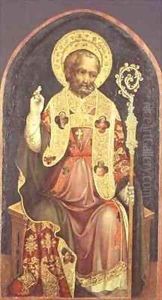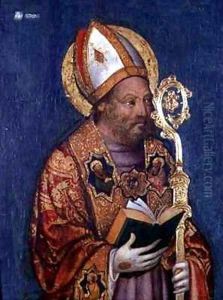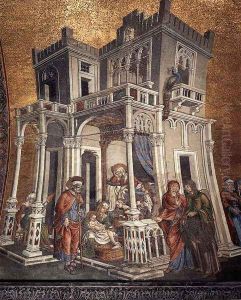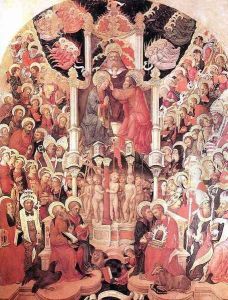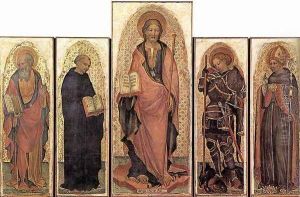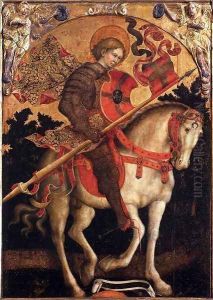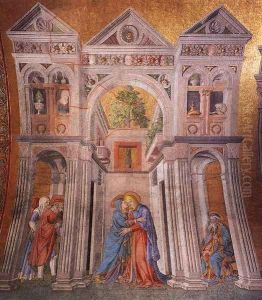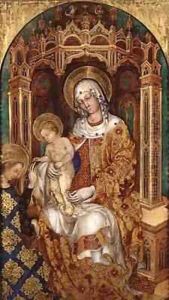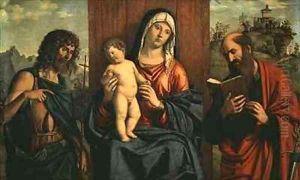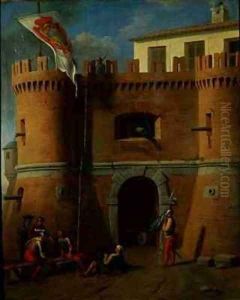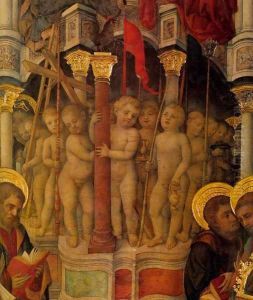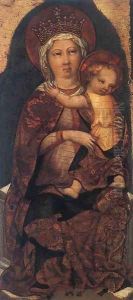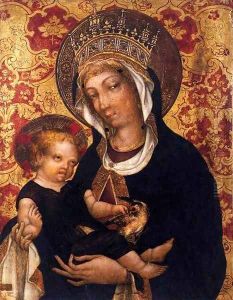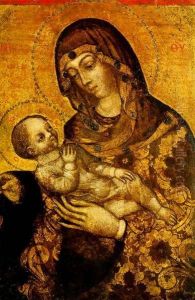Michele (di Taddeo di Giovanni Bono) Giambono Paintings
Michele Giambono, born Michele di Taddeo di Giovanni Bono around 1400 in Venice, Italy, was a prominent Venetian painter and mosaicist of the early Renaissance period. His work is noted for its incorporation of the Gothic tradition with the emerging Renaissance style, embodying the transitional artistic expressions of 15th-century Venice.
Giambono trained under the guidance of Jacobello del Fiore and Gentile da Fabriano, two influential artists of the time. This apprenticeship allowed him to develop a style that combined the intricate details and vibrant colors typical of the International Gothic style with the emerging naturalistic and humanistic tendencies of the Renaissance. Throughout his career, Giambono was increasingly influenced by the works of Pisanello and the early Renaissance Florentine artists, which is evident in the evolving sophistication of his figures and compositions.
He is best known for his work in mosaic, particularly the mosaics in the Mascoli Chapel of St. Mark's Basilica in Venice, which are considered some of his masterpieces. These works showcase his skill in creating intricate designs that are both expressive and rich in detail. In addition to mosaics, Giambono was a renowned painter, and his panels and altarpieces were celebrated for their vivid colors and detailed portrayal of religious themes. His 'Madonna with Child' is particularly revered for its elegance and has been highlighted as a significant contribution to Venetian art.
Giambono's influence extended beyond his lifetime, contributing to the development of the Venetian school of painting. His blend of Gothic elements with the early Renaissance style paved the way for future generations of Venetian artists, including the Bellini family and Titian. Despite the fact that Michele Giambono is not as widely recognized today as some of his contemporaries, his work remains an important link in the evolution of Venetian art from the medieval to the Renaissance period.
Giambono's death around 1462 marked the end of an era in Venetian art, but his legacy lived on through his contributions to the development of a distinctive Venetian style that would flourish in the late Renaissance. His works continue to be studied and admired for their unique blend of Gothic and Renaissance elements, capturing the transition of Venetian art into the Renaissance.
